|
|
Dear Colleagues,
As we enjoy this holiday season and the new year approaches, we can reflect on the many notable achievements of the past year. At SwissFEL, a dedicated team of scientists, engineers, students, and support staff drawn from multiple divisions at PSI successfully brought the facility from its pilot phase into user-operation. On the hard X-ray Aramis branch, femtosecond X-ray pulses up to 12 keV are now delivered with parameters tailored to each experiment. Additionally, recent breakthroughs in delivering highly compressed electron bunches suggest that even attosecond X-ray pulses may soon be available for users.
|
 Adrian Cavalieri Adrian Cavalieri
|
|
“Ultra-fast” X-rays are short enough to freeze individual atoms in motion, like a strobe light at a dance party. To set the scene in these experiments, femtosecond optical lasers are used to trigger corresponding dynamical processes. For full effect, however, precise synchronization between the laser excitation and X-ray strobe is essential. The level of control reached at SwissFEL can be compared to delivering two pulses of light from different buildings nearly a kilometer apart simultaneously in a target less than a tenth of the thickness of a human hair - a remarkable achievement indeed.
As we celebrate “first lasing“ of ATHOS, an important milestone just achieved last Tuesday, we can also look ahead to the many new opportunities to be explored in commissioning the soft X-ray branch of SwissFEL. In particular, we plan to investigate the possibility of directly imprinting the coherence properties of optical lasers on the amplified free-electron laser X-ray emission. In conjunction with other unique aspects of the SwissFEL accelerator and undulator designs, I believe laser seeding will help SwissFEL to emerge as the world’s leading facility for time-resolved X-ray research.
I look forward to another year of great progress and success at PSI.
Happy Holidays and Happy New Year!
Adrian Cavalieri
on behalf of the Laboratory for Non-linear Optics, Photon Science Division, PSI
|
|
Next proposal submission deadlines:
Particle Physics
deadline: January 13, 2020
more information
SINQ
deadline: January 31, 2020
more information
SLS: non-PX beamlines
deadline: March 15, 2020
more information
SwissFEL
deadline: March 15, 2020
more information
SLS: PX beamlines
deadline: April 15, 2020
more information
SµS
deadline: June, 2020
more information
An overview of all proposal submission deadlines of the PSI facilities can be obtained here.
|
|
|
Three-dimensional imaging of integrated circuits with macro- to nanoscale zoom
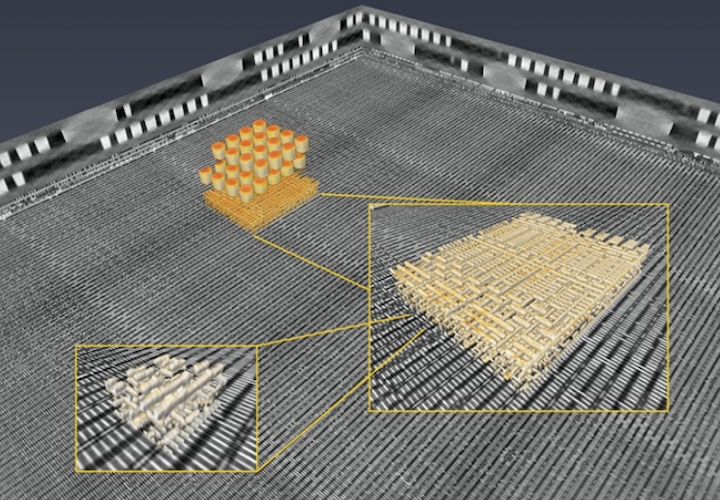 SLS - Across the scales SLS - Across the scales
The ability to image integrated circuits across different length scales is important for tasks ranging from design validation to failure analysis and quality control. Currently a suite of distinct probes is needed, from optical microscopy for imaging the largest features to electron microscopy for the smallest ones. PSI researchers have now further developed a method pioneered at SLS, ptychographic X-ray laminography, and demonstrate that they can obtain non-destructive 3D views of an entire chip, and then zoom in on arbitrarily chosen subregions of interest to acquire high-resolution images. As a demonstration, they used the technique to first scan a 300 × 300 μm2 area of a 16-nm FinFET integrated circuit in low-resolution mode, to subsequently focus on a section of 40-μm diameter, of which they produced a 3D image with 18.9-nm reconstruction resolution.
Read the full story
|
|
|
M. Holler et al, Nature Electronics 2, 464 (2019)
|
|
|
Nanocrystal superlattices as phonon-engineered solids and acoustic metamaterials
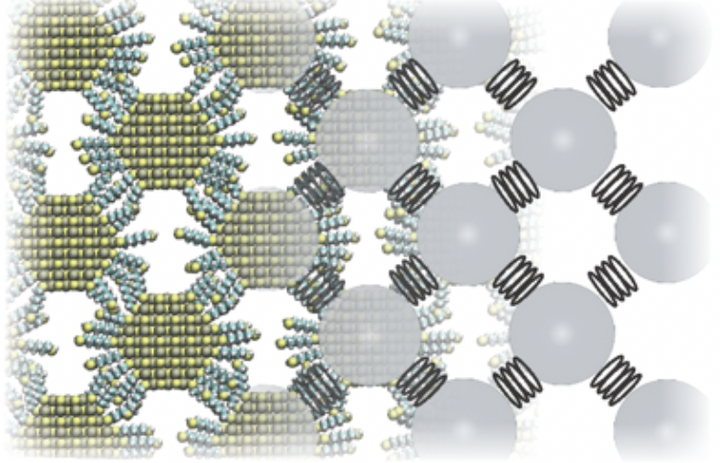
SINQ - Solid sound effects
Colloidal nanocrystals can be conveniently assembled from solutions into densely packed superlattices with widely tunable electronic and optical properties. Researchers from ETH Zurich have now demonstrated that the highly complex vibrational modes of such superstructures can be systematically engineered as well. At SINQ, they performed inelastic neutron scattering experiments in which they characterised the phonon density of states in various nanocrystal superlattices and established that their phononic structure can be well understood with a spring–mass model. With this knowledge at hand, and given that the properties of the superlattices can be controlled in many ways - for example through the composition, size, shape and surface of the nanocrystals - a versatile platform emerges for creating solids with tailored acoustic properties that cannot be achieved in traditional architectures.
Read the full story
|
|
|
N. Yazdani et al, Nature Communications 10, 4236 (2019)
|
|
|
Extended magnetic dome induced by low pressures in superconducting FeSe1– xSx
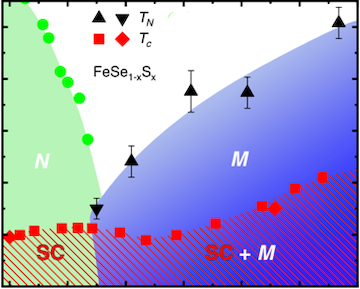
SμS - Intriguing interplay under the dome
Despite years of intense study, FeSe - the structurally simplest iron-based superconductor - continues to hold mysteries. In particular, it is still debated how magnetic and nematic structural order interact, and how each of them affects superconductivity. Fresh insight comes now from muon spin rotation and relaxation experiments at SμS, combined with magnetization measurements. In a study of FeSe1– xSx, where S-substitution is used as a structural tuning parameter, a substantially extended magnetic dome was found for x ≈ 0.11 when a hydrostatic pressure above ∼0.6 GPa was applied. The magnetic order competes initially with the microscopically coexisting superconducting phase, leading to a local maximum and minimum in Tc. For increasing sulphur content, the local maximum shifts to lower pressures, and by extrapolation magnetism and superconductivity are predicted to coexist at ambient pressure for x ≥ 0.2.
Read the full story
|
|
|
S. Holenstein et al, Physical Review Letters 123, 147001 (2019)
|
|
|
Ultrafast diffuse X-ray scattering of a hybrid perovskite crystal
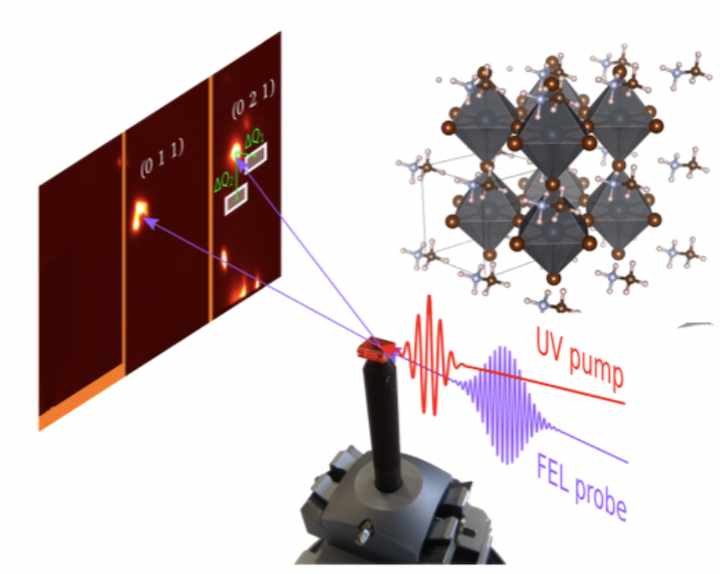 SwissFEL - Clarity through diffuse insight SwissFEL - Clarity through diffuse insight
Organic-inorganic ‘hybrid’ perovskites have gained recent attention as a low-cost alternative to silicon solar cells. However, many properties of these materials remain poorly understood. One puzzle is why energy transport in perovskite cells seems to be much less affected by crystal imperfections than in their silicon counterparts. To investigate this question, an international team measured the ultrafast diffuse X-ray scattering of a hybrid perovskite crystal at the Bernina instrument of SwissFEL. The response to impulsive UV-light excitation reveals the disorder hidden inside the crystal lattice. Changes in the diffuse-scattering intensity after photoexcitation were recorded over a wide range of angles, such that different phonon waves could be discerned - providing valuable insight into how the perovskite crystal lattice might 'protect' charges created by light.
Read the full story |
|
Workshop on the physics of fundamental symmetries and interactions
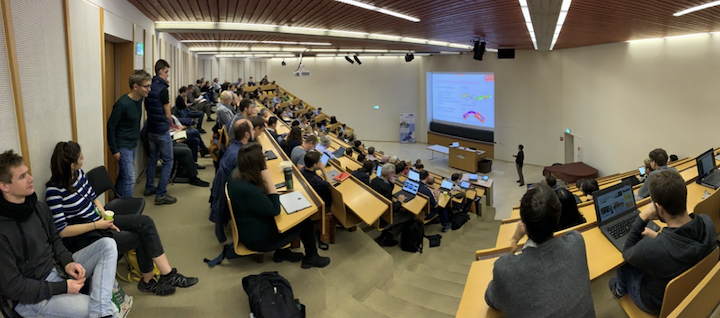 Particle Physics - PSI2019 at PSI Particle Physics - PSI2019 at PSI
From 20 to 25 October, the 5th Workshop on the Physics of fundamental Symmetries and Interactions (PSI2019) was held at PSI. The workshop brought together 200 scientists from all over the world working on some of today’s most precise particle-physics experiments at the low-energy frontier. Scientific highlights among the 60 plenary talks and 80 posters included latest experimental and theoretical advances to resolve puzzles such as the anomalous magnetic moment of the muon (g-2) and the proton radius, as well as updates on various other high-precision measurements, from the electric dipole moment (EDM) of the neutron to dark-matter candidates. On the social side, the BBQ accompanying the poster session and the conference dinner with an Alphorn performance and Swiss raclette offered perfect opportunities for exchange and informal discussions.
Read the full story
|
|
6-axis, 4-Kelvin endstation for high-resolution angle-resolved photoemission spectroscopy
SLS
A new endstation for high-resolution angle-resolved photoemission (ARPES) is now in operation at the Surface/Interface Spectroscopy (SIS) beamline. The station, dubbed ULTRA, is based around a 6-axis manipulator capable of operating at temperatures as low as 4 Kelvin. It also features a ScientaOmicronTM DA30-L analyzer with deflector-based scanning, which can simplify Fermi surface mapping from especially small samples or domains. The cutting-edge performance is achieved with an eye toward flexibility and simplicity for the user, setting a new standard in ARPES instrumentation for probing the electronic structures of quantum materials.
|
|
Status of SINQ guide upgrade and first call for proposals
SINQ
The SINQ guide upgrade continues according to plan: After the 4.5m guide section closest to the cold source was already successfully installed last spring, the two guides for DMC and CAMEA have now been completed. The FOCUS guide in the bunker is also completed, and all remaining guides are ready for installation. The closing of the neutron bunker is now planned for early March.
The beginning of the operation of SINQ is planned for 18 May 2020, and user operations will commence in June/July 2020, with a first proposal submission deadline on January 31, 2020. These proposals will apply for the beam time period I/20 between June-September 2020. The following instruments will be either fully or partially available during that SINQ cycle: HRPT, ZEBRA, POLDI, NEUTRA, ICON, SANS-I, TASP, EIGER and FOCUS. Further information can be obtained here. |
|
Successful user operation 2019
SμS
The Swiss Muon Source SμS looks back on a very successful year of user operation in 2019. More than 220 experiments could be performed on the five instruments in operation: GPD, GPS, LEM, HAL-9500 and DOLLY. 156 different users from 23 countries came along, with the largest foreign communities coming from the United Kingdom (10%) and Germany (9%).
The number of new submitted proposals is more than encouraging: a new record of totally 377 proposals were submitted during the year 2019, 199 of them for the recent submission deadline in December. The proposals are now under evaluation and the users can expect to be informed about the results in late February 2020.
|
|
Study of muonic atoms with the miniball high-purity Germanium detector array
Particle Physics
Muonic atoms as laboratories for fundamental physics provide crucial input to quantum electrodynamics, the weak and the strong interaction. Many studies of muonic atoms have relied on the detection of X-rays from the muonic cascade.
For this year's campaign of the muX experiment, the Miniball high-purity germanium detector array was brought from CERN to PSI; benefitting from this unique opportunity due to the long shutdown at CERN. During the seven weeks of the campaign, four different experiments were conducted: The measurements of the unknown charge radii of the radioactive nuclei 248Cm and 226Ra using microgram targets, measurements of muon capture rates of elements relevant for neutrinoless double-beta decay, elemental analysis of historical artefacts and the measurement of the elusive single photon 2s-1s transition in muonic zinc.
|
|
JUSAP - The Joint Users Association
Dear colleagues
Construction works of InnovAare Park close to Swiss Light Source building have started. It is expected that the resulting vibrations will have implications on the operation of SLS over the next months. In reaction, SLS management and the general contractor have established a collaboration to minimize those effects.
|
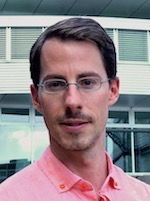
Claude Monney
|
|
During user operation time, heavy construction works will be restrained. Current expectation is that the existing shutdowns and vibration intense works can be coordinated to maintain a high level of availability of SLS. However, this cannot be fully ensured because of external constrains, and the performance of some beamlines might be affected by vibrations. Please contact your beamline scientist in the first place to evaluate the situation.
The 17th SESAME users meeting, organized in combination with the regional meeting of the European synchrotron and free-electron laser user organisation (ESUO), took place on November 30th and December 1st, 2019, at the SESAME synchrotron (Allan, Jordan). The scientific program of this successful joint event was divided in several sessions, aiming at presenting SESAME in terms of infrastructure, beamlines, performed experiments; the afternoon session on December 1st, 2019 was dedicated to an ESUO regional meeting. About 40 participants from SESAME member countries and beyond took part in this afternoon session, jointly organized with SESAME and SESAME User Committee (SUC). During this session, participants could learn about ESUO, access and training to synchrotron radiation facilities, as well as synchrotron-based scientific research work conducted by scientists from the Eastern Mediterranean and Middle East region. Fruitful discussions and exchanges took part, which contributed to the success of this joint event.
We encourage you, members of the PSI user community, to communicate to us any issues, concerns or suggestions. In this case, please contact us, committee members, directly.
Yours sincerely,
Claude Monney and Annick Froideval on behalf of the JUSAP committee
|
|
Upcoming events
Please have a look at our conference calendar.
|
|
|
|